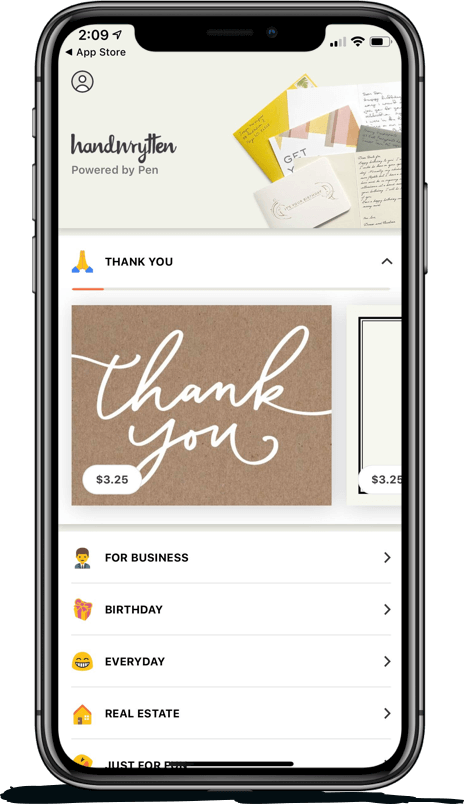
9280 S. Kyrene Rd.
Suite 134
Tempe, AZ 85284
Phone: +1 (888) 284-5197
Email: contact@handwrytten.com



You have been subscribed. Thank you!
Recent years have had an immense impact on the automotive industry – a worldwide pandemic simultaneously pushed dealers and OEMs alike to develop better digital channels and platforms. Combined with further technological developments to create EVs at an increasing rate, with some manufacturers beginning to solely focus on rolling out new EVs, the automotive industry is slowly switching from the traditional sales model to a direct sales model known as the agency model.
Similar to how automotive marketing trends are steadily changing, the agency model has slowly become the ‘meta’ sales model for new vehicles in Europe, with some examples being Volkswagen’s direct sales model, Volvo’s plans to ramp up online sales until only selling online by 2030, and even Daimler’s direct-to-consumer sales in Europe.
According to Cox Automotive, a ‘genuine’ agency model is slightly different from a ‘non-genuine’ agency model.
Genuine agency models are a relatively new sales model where the manufacturer sets rigid pricing and manages the online relationship between consumer and OEM, and the dealership acts more as an agent to interact with the customer. But, the consumer will ‘build’, purchase, and order a car from the OEM’s website directly to their preferred dealer.
The non-genuine model, on the other hand, is one where the dealer has a bit more flexibility in the process – some brands, like Volkswagen, have integrated a hybrid model where dealers can moderate pricing via rebates, but still, have the majority of the control in the manufacturer’s hands.
How does this new automotive sales model compare to the prior dealership model?
In the agency sales model, the dealer now acts as an agent, focusing on providing support to customers, but is ultimately restricted by the OEM on what kind of pricing adjustments they can make. But, this offers the benefit of more consistent compensation from manufacturers compared to the dealership model.
In the dealership model, automotive manufacturers have extremely limited interactions with customers, with the dealer generally acting in their own best interest: without proper advertising, marketing, and in-store sales tactics, they will simply not earn money.
Transitioning to new sales models that allow established OEMs to interact further with consumers simultaneously helps to develop stronger relationships between dealers and manufacturers – the dealer remains a core part of the buying process, acting as retail partners that can offer services and build relationships, while car manufacturers themselves can optimize outreach and up their bottom line much more easily.
Even though there is an objectively significant benefit for dealerships and manufacturers alike, OEM mindset shifts when it comes to the ‘best’ sales model primarily stem from an increasing consumer desire for things like a better omnichannel experience, better price transparency, and an increased preference for buying cars using a fluid online process.
Research from Capgemini, a Paris-based IT and consulting company, took a look at roughly 6000 consumers across six global markets: China, the UK, Germany, Spain, France, and Sweden to understand what points during the automotive sales experience could be best improved upon. Their full report is available here, but for the sake of this article, we’d like to highlight the most relevant statistics.
Almost certainly accelerated by the COVID-19 pandemic is a quickly massing body of customer data that lends to the idea that online sales will become more and more important as the years continue.
With an increased desire for online-only purchasing comes more power for the OEM to guide the sales funnel in their preferred direction – lower overhead cost, more price control, and greater access to consumer data through their websites.
This is supported by the fact that 86% of consumers from this study claimed that they are open to sharing their information with OEMs and agents alike, meaning the client-customer trust that many dealers purport as crucial to the old dealership model is slowly phasing out.
Now, that doesn’t mean that sales efficiency and direct access to agents that care about car buyers are irrelevant – ensuring that every step of the car buying process is enjoyable is crucial, and we’ve created a plethora of rich content that discusses the best ways to optimize your social media marketing strategy as well as discuss what it means to be an automotive marketer in general.
Another change stemming from the global pandemic is a greater desire for price transparency. Rather than the old days when haggling for the best price at car dealerships was commonplace, we are going to experience a transition towards rigid pricing set by the OEM. This offers both a greater understanding of pricing for the consumer, as well as a simplified process for the manufacturers and dealers to calculate how much money they make per sale.
Overall, for the auto industry, the agency model is largely positive for all parties, established OEMs, dealer networks, and customers alike, but there are potential downsides that can occur without proper attention to the distribution network.
With a more centralized process for consumers to buy new vehicles comes greater access to data for manufacturers. By taking on greater control of the customer relationship, the customer lifetime value can more easily be ascertained by OEMs, informing strategy for future business models and dealerships.
They can optimize what kinds of discounts they offer to customers and centralize pricing all around, offering a better customer experience, while also gaining the ability to have a consistent pricing scheme now that they don’t have to worry about inter-dealer competition.
With the OEM taking on the majority of distribution costs, dealerships can now focus on what automotive agents are known for: agent-consumer relationships.
Setting themselves apart from other local dealers is now the name of the game. 10 years ago, email marketing, direct mail, and even automated text messages were highly effective in consumer outreach. But now, the game has shifted entirely; customers receive hundreds of email every day, so dealers have to be unique to garner interest. We’ll delve a bit deeper into a simple solution for this towards the end of this article (hint: it’s Handwrytten).
Regardless, while dealers will likely still take on the job of selling used cars, their new priority will be on developing customer relationships to sell products and services over the long term. No longer will their bottom line be contingent on getting as many customers to buy as many cars as possible – they don’t even have to take on the financial or inventory burden of holding cars any longer.
However, if communication with their respective OEM is poor, they may sell too few vehicles compared to the number of new cars built, leading to an overall financial negative for the OEM. But, with proper refining of this sales model, this is a problem unlikely to occur.
With changes in sales models, the customer experience is now placed at the forefront of OEM concerns; as established from the statistics above, without a fantastic omnichannel experience, potential customers are likely to switch dealers or brands entirely.
But for established OEMs that properly develop their customer experience using customer data, a sales transaction can occur with the customer knowing that they are getting the best price that they can for a car while simultaneously having a simple car-buying experience.
This only makes sense with how the world has changed in recent years – the best sales models are ones that focus on optimizing the online experience, connecting with customers at every step of the way whether it be through social media, email, or direct outreach.
Overall, to increase sales efficiency and improve profit margins, sales models in any industry have to change. For automotive sales specifically, a transition to the agency sales model makes the most sense – it allows the dealer and the OEM to focus on different goals while allowing them to garner better profits, and provides a better, more transparent experience for car buyers.
If it wasn’t clear from the above content, the agency model offers a huge list of benefits to dealers, allowing them to have a more targeted focus on improving customer relations while minimizing the burden of holding inventory. Even further than that, it is significantly more expensive to acquire a new customer as opposed to retaining one.
Due to this, building a brand that shows you care about the customers and what their needs are is the ultimate goal here – in doing so, you can become their dealer of choice, their community partner that they continually return to for service and auto parts.
This means that taking steps to focus on customer retention and improving methods for customer outreach is key. Handwrytten’s industry-standard platform can offer immense benefits for both goals.
The transition from being purchase-focused to now being relationship-focused can be a bit difficult for some dealerships, but a mindset shift and a reallocation of resources are all that it takes to set yourself apart.
Think about it this way: in the past, the extent of the customer-dealer relationship was interacting to select a car to purchase, and the best dealers would reach out afterward to send a thank you of some sort. But now, there is ample opportunity to build an even greater connection with customers, helping you garner more referrals, spend less on retention, and become a stronger community partner.
Using a wide variety of handwritten notes – holiday cards, thank you cards, service reminder cards, annual appreciation cards – should all become a staple in any dealer’s customer experience repertoire. This will set you apart from other dealers and will say to customers – “we’re happy to be your friend, and we care about you” – the fact that there is a 99% open rate for handwritten mailers should emphasize this point even more.
There is a significant difference in how a person psychologically receives a handwritten versus a printed note. When a note is handwritten, it feels more personal. It conveys the message that you, the automotive dealer, care about your customer. Not only will this help you to retain more customers, but it will also increase the number of people who refer you to their friends.
You also can try our handwritten salesforce notes Integration to boost your strategy and workflow.
For car dealers, in particular, we can integrate your DMS with our platform to easily automate the process of sending handwritten cards to the customers you want. This level of personalization is unheard of in the automotive industry, but from the perspective of a potential or current customer, receiving a handwritten note that addresses a problem or desire has an immense emotional impact.
Check out our handwritten automotive dealers notes if you are interested in automatically sending handwritten cards to your customers.


Scale your handwritten outreach, creating positive impressions and long lasting bond.
Sign Up Today!


Over 100 designs to choose from or design your own. Our online card customizer makes it simple.
Check Out Our Cards!





